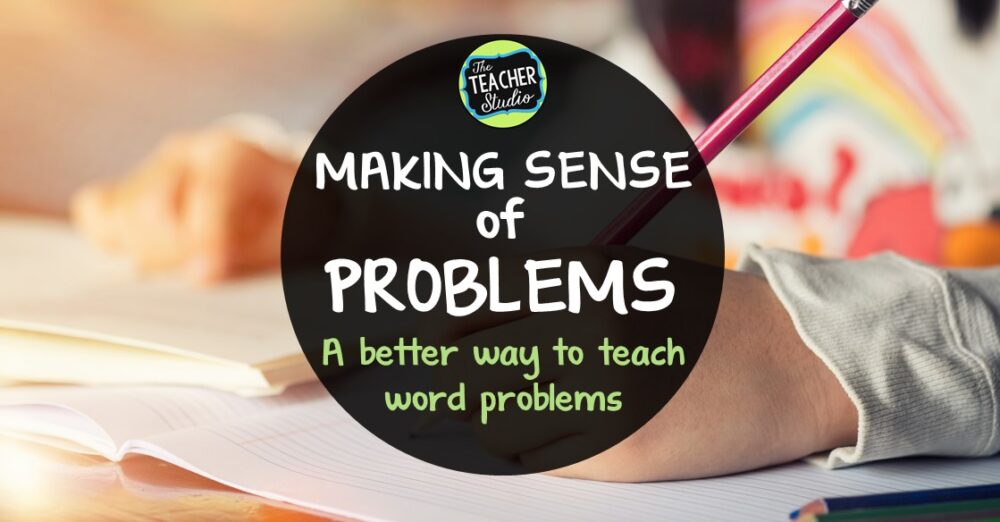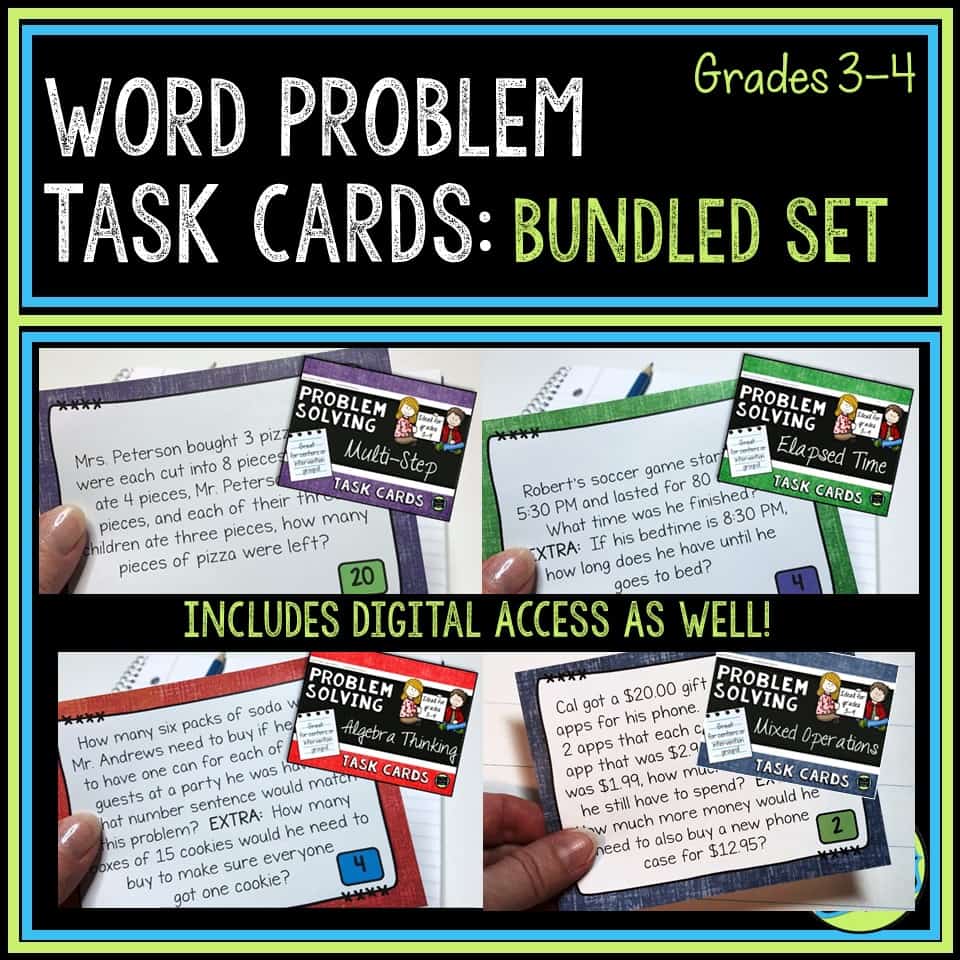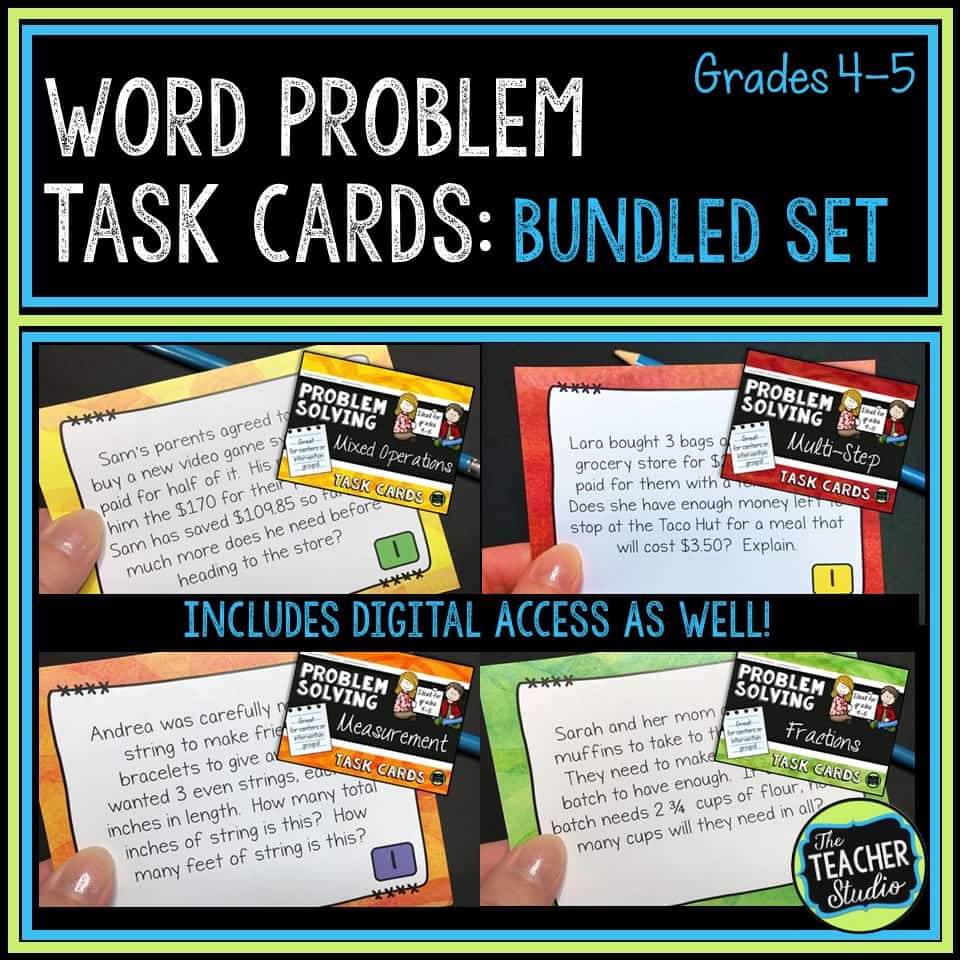

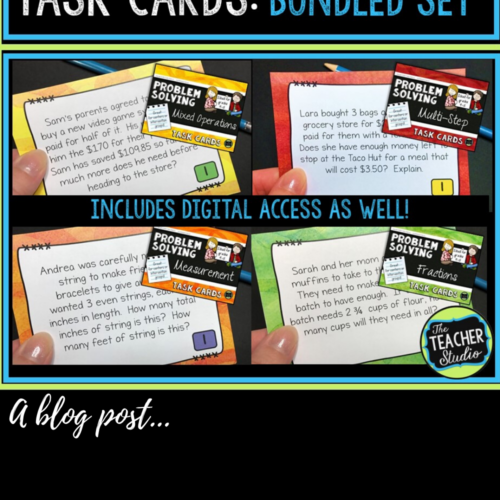

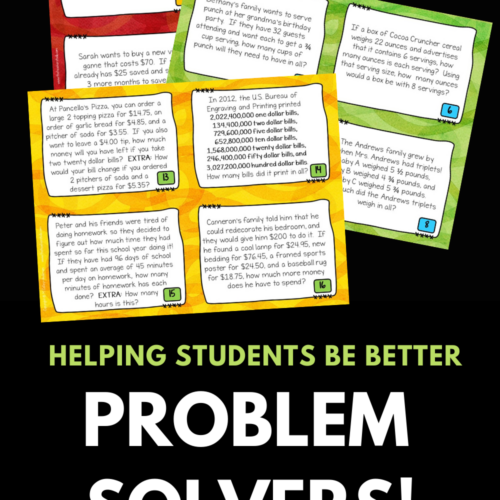










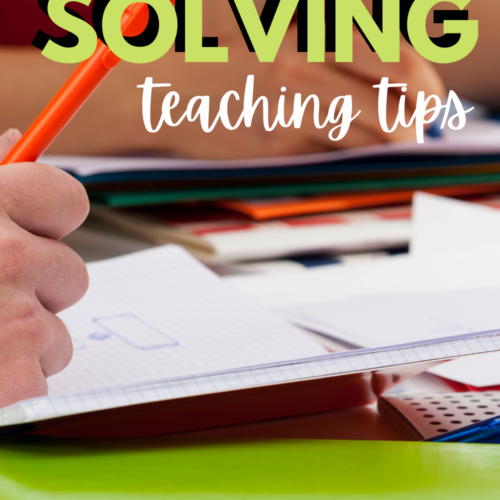

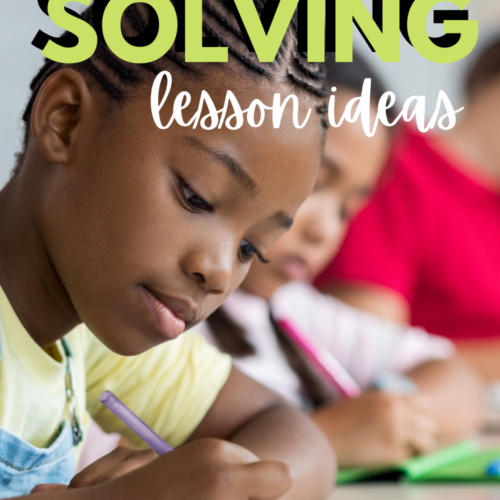
Over the years I have noticed that students tend to look for routine in math class. If it’s a division unit, they will divide any two numbers they find! If it’s a subtraction unit, they try to regroup everything! So what does this mean for word problems? It means we need to put students in a position where THEY need to think and decide what operation and strategies to choose.
If we constantly take the thinking away from our students, then even solving word problems becomes computational. For that reason, I try hard to sprinkle in a variety of problems all year that require students to think and apply what they have learned—perhaps draw a picture or make a table to help . . . but, most importantly, to THINK about math. I hope you find these tips useful! Read on for more.
Make Sense of Problems and Persevere In Solving Them
Many of you who have followed me for any length of time know I am passionate about the Standards for Mathematical Practice. I am also passionate about helping “unpack” them for teachers because, unfortunately, they are lengthy and contain SO much information.
Let’s take a quick peek at the first part of the “Make sense of problems and persevere in solving them.” I have noticed that MANY teachers have spent the last years helping their students learn to PERSEVERE…this has to do with having a growth mindset (click HERE for a blog post) and is SO important. I have also learned that many teachers spend less focus on the first part of the standard. Check out the first few sentences (and notice how wordy they are as well!)
“Mathematically proficient students start by explaining to themselves the meaning of a problem and looking for entry points to its solution. They analyze givens, constraints, relationships, and goals. They make conjectures about the form and meaning of the solution and plan a solution pathway rather than simply jumping into a solution attempt.”
Let me simplify it for you.
Mathematicians need to figure out what a problem is asking and find a way to get started. They use the strategies and information they know to make a logical “first try”. Now, I would LOVE for you to read farther into this standard to realize how complex it is. The reason I am focusing on this is to prove my point that WE CANNOT DO THE THINKING for our students. If we are teaching addition and only give addition word problems, there is no opportunity to “make sense” of the problem. We have done the work, not them. This is how we create math students who struggle when presented with novel problems and situations. (Interested in a blog post about explicitly teaching problem solving strategies? CLICK HERE)
We need to give students ample opportunity to solve a variety of problems in a variety of contexts. End of story.
How Do I Find Word Problems To Help?
There are lots of options. Consider “saving” problems in your math series to revisit at later times If you teach a unit early in the year, think about saving some problems to assign later. You can even take problems and rework them to reuse later. Sometimes problems from earlier in the year can be tweaked with larger numbers–or by adding a second “bonus” part to make them more complex.
Consider writing your OWN problems. You can use your interests (like your pets or other “favorites”. Using students names and hobbies gets them engaged and interested. Over time, you get better and better at it!
That being said, if you are looking for a lot of problems to work into your instruction, you may need to go to outside sources. Most math series simply do NOT have enough problem solving experiences, and most elementary teachers have MANY other things on their plates. Because I LOVE to write problems, I have a ton in my store that can help.
Need Some Help?
I wanted to showcase a few sets of task cards today because I want to help you get word problems into your students’ hands. I use word problems so many ways and in so many places in my instruction. It crushes me when I see so many math series taking one of these two approaches:
- Many lessons have one or two simple word problems at the end. (And some teachers skip them!)
- Many chapters/units have one or two lessons that focus on problem solving in isolation.
Students need to be solving problems DAILY, and neither of these options are sufficient. The simple truth is that most of us need to supplement.
If you are interested, these bundles of four sets of 20 problem solving task cards are perfect to use in so many ways:
- as a whole class warm up
- as a cooperative experience
- in small group instruction
- for math stations or centers
- as intervention groups
- or even as a digital learning experience (perfect for distance learning, homework options, or when planning at home!)
These two bundles are divided by informal grade levels–because you know as well as I do that grade leveling resources is a challenge. The 3/4 bundle is geared to be instructional for grade 3 and independent for MOST grade 4 students. They are review for grade 5. The 4/5 bundle is meant to be instructional for grade 4, independent for grade 5, and intervention for grade 6. Hope this helps! Task cards can be printed in color or black and white or can be sent digitally.
The Process Is More Important Than the Solution
I have included answers in my resources along with three rubrics to use to help in scoring the Standards for Mathematical Practice. Task cards are included in both color and low-ink, AND DIGITAL versions for ultimate flexibility. There are blank recording sheets that can be used for students to track their work, or they can simply do their work in a notebook. They are available with a TON of different math content.
That being said, please know that the ANSWERS to these problems are less important than the process. We want students to learn how to solve problems and make smart solution choices. Do we want them to add and subtract accurately? YOU BET! But that is addressing the precision standard–not the problem solving strategy. Make sure you keep these two “types” of errors clear when assessing students. Where are they going wrong? What are they doing well?
Enough for now…but I hope I have given you some food for thought.
Interested in checking out some of my word problems? CLICK HERE for the word problem category in my store.

